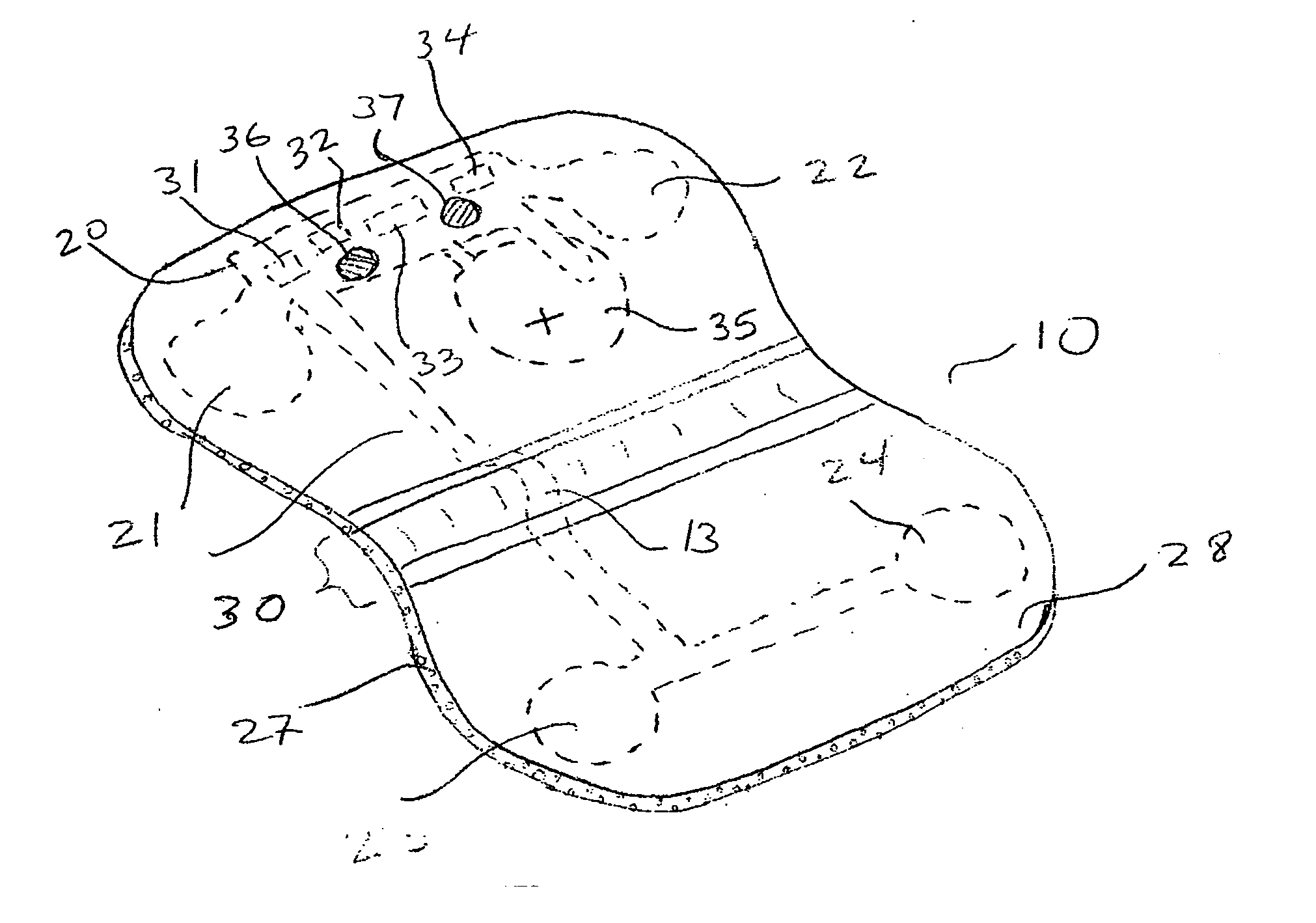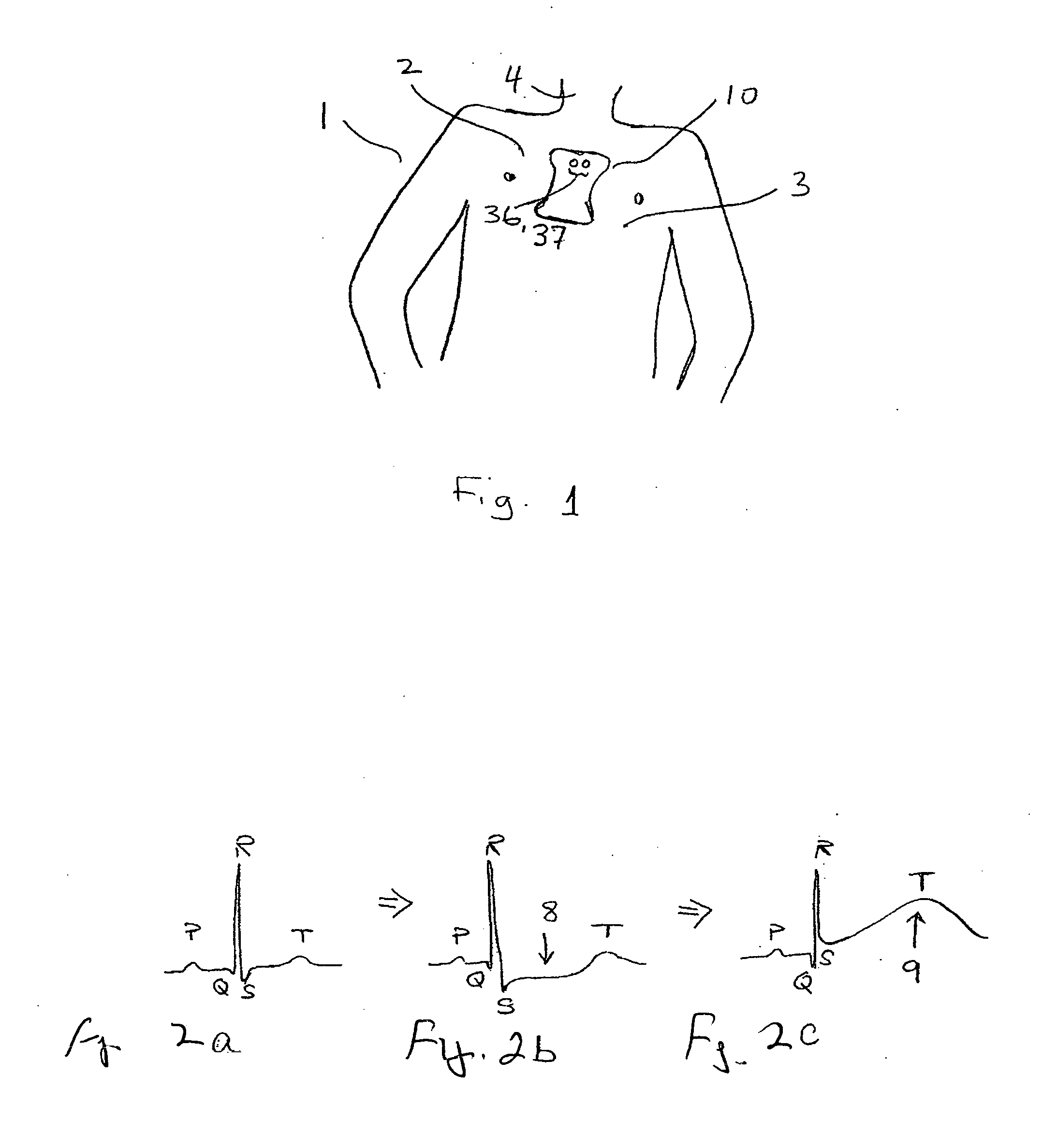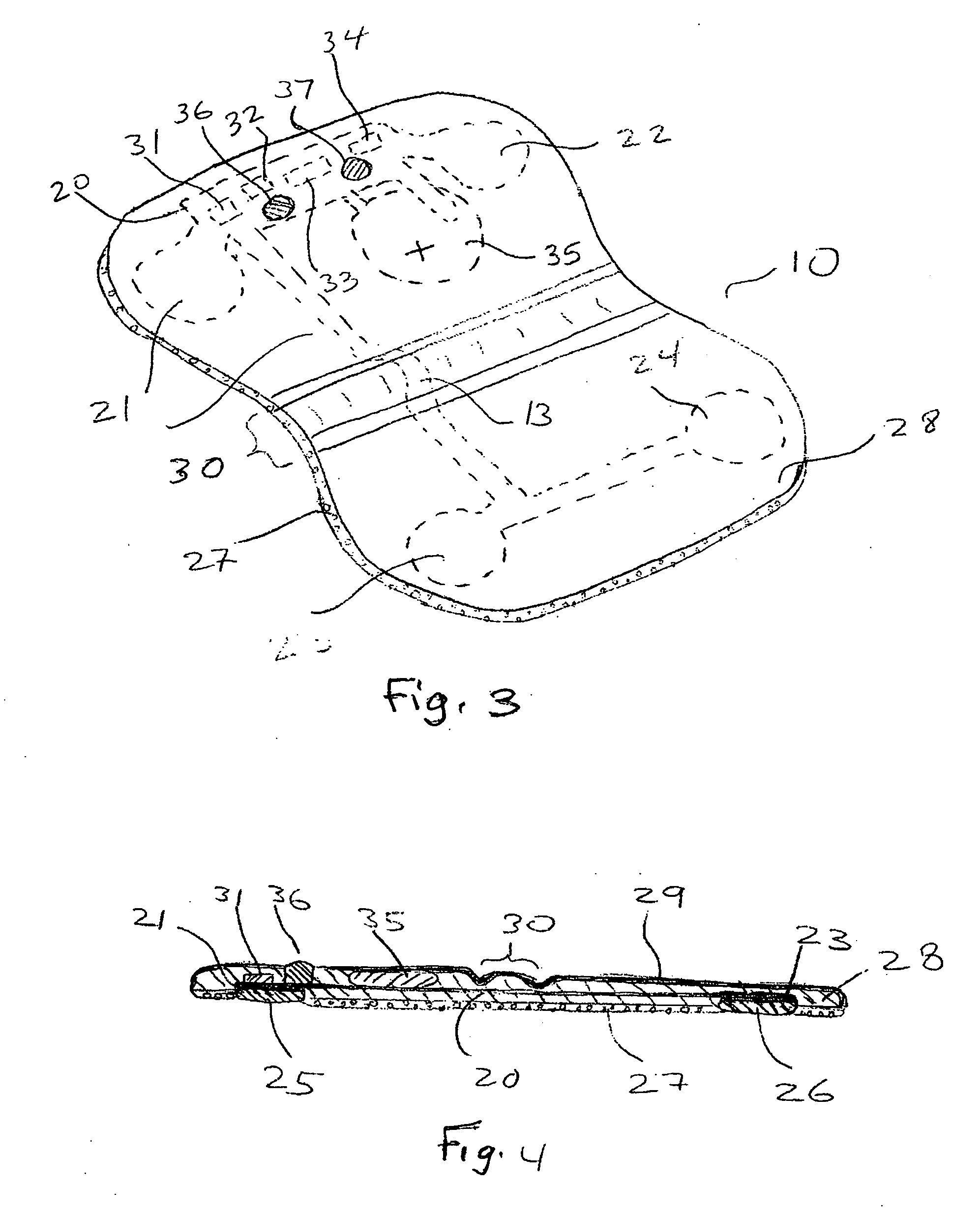Heart disease detection patch
a heart disease and patch technology, applied in the field of electrocardiograms, can solve the problems of more damage to the heart and other vital organs, lower quality of life for survivors, and higher hospitalization costs, and achieve the effects of low cost, convenient self-administration, and simple us
- Summary
- Abstract
- Description
- Claims
- Application Information
AI Technical Summary
Benefits of technology
Problems solved by technology
Method used
Image
Examples
Embodiment Construction
[0044] The invention, shown in various embodiments of FIGS. 1 and FIGS. 3-12 is a disposable non-invasive patch for detection and indication of heart abnormality. The patch 10 is thin, flat, and flexible for placement on the chest area 2 of a person 1 whose heart is being examined for possible abnormality. The sensor patch relies on a surface electrocardiogram (ECG) for detecting and analyzing non-invasively the electrical activity of the heart and indicating the results through an indicator integrated into the patch. The smart patch is fully self-contained and self-powered. The patch analyzes the ECG for an extended period of time, e.g. 24 to 48 hours or more, depending on the application. Patterns of ECG abnormalities are detected and the risk level is indicated to the user wearing the device. The electronic sensor patch is designed for inexpensive over the counter availability and primarily for self-administration.
[0045] Referring to the embodiment of FIGS. 3 and 4, the sensor p...
PUM
 Login to View More
Login to View More Abstract
Description
Claims
Application Information
 Login to View More
Login to View More - R&D
- Intellectual Property
- Life Sciences
- Materials
- Tech Scout
- Unparalleled Data Quality
- Higher Quality Content
- 60% Fewer Hallucinations
Browse by: Latest US Patents, China's latest patents, Technical Efficacy Thesaurus, Application Domain, Technology Topic, Popular Technical Reports.
© 2025 PatSnap. All rights reserved.Legal|Privacy policy|Modern Slavery Act Transparency Statement|Sitemap|About US| Contact US: help@patsnap.com



